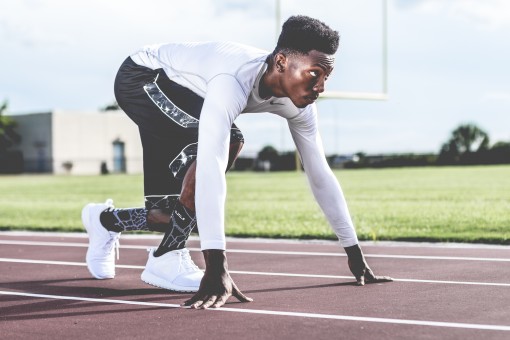Oct 25, 2017Best Tests
Testing athletes can help coaches recognize areas of weakness, set attainable goals, identify talent, and monitor progress. But in order to gain information that is truly useful, coaches must give their athletes the right kinds of assessments. In an article for Sport Fitness Advisor, coaches can find step-by-step instructions on designing a “battery” or constructive group of physical fitness tests that will work best for their athletes.
The authors at Sports Fitness Advisor explain that coaches must first make sure that the fitness tests match the demands of their specific sport. This can be done by breaking down the sport into its different physical components, such as aerobic and anaerobic endurance, strength, power, speed, and agility. The tests should then include portions that measure each component while also replicating the energy demands and movement patterns of the sport.
“Keeping with the soccer example… Walking 1 mile as quickly as possible (Rockport test) is less sport-specific than running in 20m bursts backwards and forwards (Multistage shuttle run),” write the authors.

When creating the assessments, coaches must then keep in mind a few areas of test quality. First, the test must always measure the aspect of the sport that you are focusing on. For example, if you are measuring an athlete’s sprinting ability, you would not test them with a distance run. Beyond that, a test must also be reliable.
“This refers to the consistency or repeatability of a fitness test,” write the authors. “If an individual does not change his or her athletic ability then a reliable test, repeated twice will show no difference. The only variable the test should measure is the one it is designed to.”
There are multiple aspects that can cause a test to be unreliable. These include coaches with different protocols carrying out the tests, conducting the tests in differing environmental conditions, and not controlling internal factors such as when the athlete last ate or drank.
To help create more reliable and accurate assessments, the authors at Sports Fitness Advisor offer a few general guidelines. First, the athlete should always warm up with light aerobic exercise and stretching. Other tips include conducting each test in the same environmental conditions, making sure any equipment is properly calibrated, and avoiding heavy training the day before.
The order that the tests are given in should also be kept the same. Here is the order of tests suggested by the National Strength and Conditioning Association:
- Non-fatiguing tests
- Agility tests
- Maximal strength & power tests
- Sprint tests
- Muscular endurance tests
To help coaches choose the right tests for each category, the authors at Sports Fitness Advisor provide some examples of reliable fitness tests for measuring strength, speed, power, endurance, and flexibility. To measure core strength, the authors recommend a sit up. A good indicator of strength endurance is a press up.
If you’re looking to measure explosive power, consider using the standing vertical jump or the standing long jump. For a more simple fitness test to measure power, you can have your athletes run 30m sprints. When measuring endurance, coaches can implement the Balke 15 minute run. According to an article for Topend Sports, this requires participants to run for 15 minutes. The distance that they covered is then recorded and used to estimate VO2max.
When it comes to measuring flexibility, the authors at Sports Fitness Advisor explain that the number of reliable tests is small. However, a few examples are the sit and reach test, the trunk rotation test, and the groin flexibility test.
Once you have developed your group of tests, it is important that you implement the process at the right times during your season. You should first use it at the beginning of your athlete’s training program. This will serve as the baseline for the future tests. The authors at Sports Fitness Advisor then suggest measuring athletes about six weeks later, as well as just before the first game and a few times throughout the competitive season.
Top Ad ZoneID:
48435



